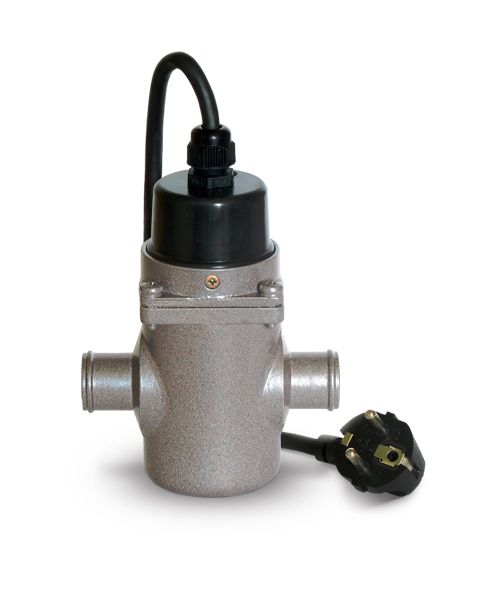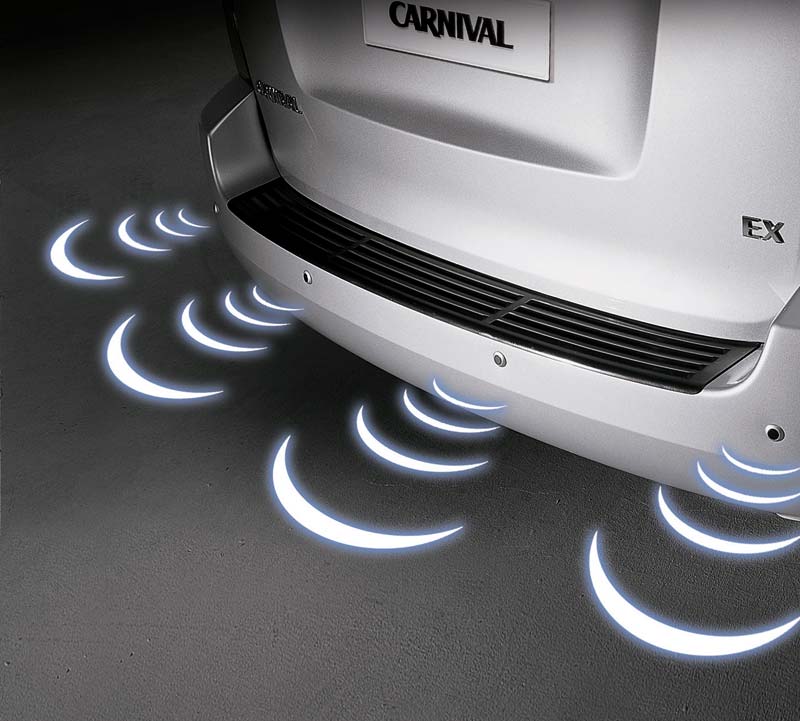
Car parking sensors
Content
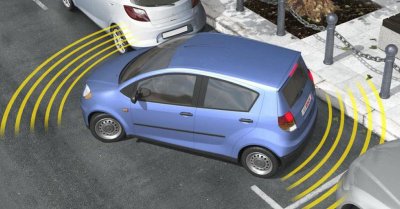 APS (acoustic parking system) or, as it is more commonly called, parking sensors, is an auxiliary option that is installed on the basic car configurations at the request of the buyer. On top versions of cars, parking sensors are usually included in the general package of the car.
APS (acoustic parking system) or, as it is more commonly called, parking sensors, is an auxiliary option that is installed on the basic car configurations at the request of the buyer. On top versions of cars, parking sensors are usually included in the general package of the car.
The main purpose of parking sensors is to facilitate maneuvers in cramped conditions. They measure the distance to approaching objects in the parking lot and signal the driver to stop moving. To do this, the acoustic system uses ultrasonic sensors.
The principle of operation of parking sensors
The acoustic parking system consists of three elements:
- transducers-emitters operating in the ultrasonic spectrum;
- a mechanism for transmitting data to the driver (display, LCD screen, etc., as well as sound notification);
- electronic microprocessor unit.
The work of parking sensors is based on the principle of an echo sounder. The emitter sends a pulse into space in the ultrasonic spectrum and, if the pulse collides with any obstacles, it is reflected and returned, where it is captured by the sensor. At the same time, the electronic unit calculates the time that elapses between the moments of the pulse emission and its reflection, determining the distance to the obstacle. According to this principle, several sensors work at once in one parking sensor, which allows you to determine the distance to the object as accurately as possible and give a timely signal about the need to stop moving.
If the vehicle continues to move, the audible alert will become louder and more frequent. The usual settings for parking sensors allow you to give the first signals when one or two meters remain to an obstacle. A distance of less than forty centimeters is considered dangerous, in which case the signal becomes continuous and sharper.
The nuances of using parking sensors
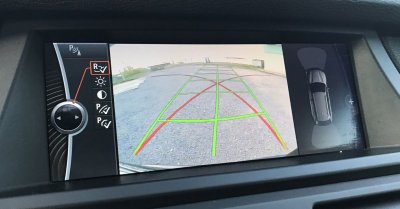 The acoustic parking system is designed to facilitate parking maneuvers even on the busiest streets or yards. However, you should not completely rely on her testimony. Regardless of the audible warnings, the driver must independently visually determine the risk of a possible collision and the presence of any obstacles in the direction of his movement.
The acoustic parking system is designed to facilitate parking maneuvers even on the busiest streets or yards. However, you should not completely rely on her testimony. Regardless of the audible warnings, the driver must independently visually determine the risk of a possible collision and the presence of any obstacles in the direction of his movement.
The use of parking sensors has its own nuances that every driver should be aware of. For example, the system "does not see" some objects due to their texture or material, and some obstacles that are not dangerous for movement can cause a "false alarm".
Even the most modern parking sensors, as experts from FAVORITMOTORS Group note, in some situations can falsely notify the driver of obstacles when they encounter the following side effects:
- the sensor is very dusty or ice has formed on it, so the signal can be severely deformed;
- if the movement is carried out on a roadway with a strong slope;
- there is a source of strong noise or vibration in the immediate vicinity of the car (music at the shopping center, road repairs, etc.);
- parking is carried out in heavy snowfall or heavy rainfall, as well as in very limited conditions;
- the presence of nearby radio transmitting devices tuned to the same frequency as the parking sensors.
At the same time, FAVORITMOTORS specialists have repeatedly encountered customer complaints about the operation of the parking system, as it does not always recognize obstacles such as cables and chains, objects less than one meter high, or snowdrifts of loose snow. Therefore, the use of parking sensors does not cancel the driver's personal control of all possible risks when parking.
Types of parking sensors
 All acoustic data transmission devices differ from each other in three ways:
All acoustic data transmission devices differ from each other in three ways:
- the total number of sensors-emitters (the minimum number is two, the maximum is eight);
- driver notification method (sound, robot voice, visual on the display or combined);
- the location of the parking sensors on the car body.
On new generation vehicles, parking sensors are usually installed in conjunction with a rear view camera: this is the most practical and convenient way to control the distance to an object that is behind.
The cost of the device is determined by the number of emitters.
2 sensors
The simplest and most inexpensive option for parking sensors is two emitter-sensors mounted on the rear bumper. However, two parking devices in some cases are not enough, since they do not allow the driver to control the entire space. Because of this, the formation of blind zones is observed, in which there may be obstacles. Experts of FAVORITMOTORS Group of Companies advise to immediately mount four sensors even on the smallest cars. This measure will really help to cover the entire space and give the driver information about the objects behind.
3-4 emitters
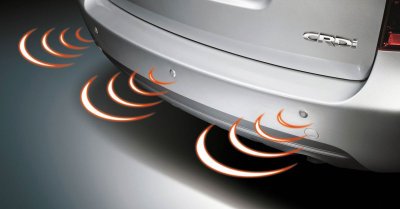 Traditionally, parking sensors with three or four emitters are mounted on the rear bumper. The choice of the number of devices is determined by the design features of the vehicle. For example, in many SUVs, the “spare wheel” is located above the rear bumper, so the parking sensors can mistake it for an obstacle. Therefore, it is better not to install parking systems on your own, but to turn to professionals in their field. Masters of FAVORITMOTORS Group of Companies are well versed in the installation of acoustic parking systems and can mount the devices with high quality in accordance with the design features of each car.
Traditionally, parking sensors with three or four emitters are mounted on the rear bumper. The choice of the number of devices is determined by the design features of the vehicle. For example, in many SUVs, the “spare wheel” is located above the rear bumper, so the parking sensors can mistake it for an obstacle. Therefore, it is better not to install parking systems on your own, but to turn to professionals in their field. Masters of FAVORITMOTORS Group of Companies are well versed in the installation of acoustic parking systems and can mount the devices with high quality in accordance with the design features of each car.
6 emitters
In such an acoustic parking system, two radiators are mounted along the edges of the front bumper, and four - on the rear. This arrangement allows, when moving backwards, to control not only obstacles from behind, but also to receive timely up-to-date information about suddenly emerging objects in front.
8 emitters
Four sensors are installed for each protective buffer of the vehicle. The essence of the work is the same as that of the parking sensors with six emitters, however, eight sensors provide greater coverage of both the front and rear spaces.
Three Installation Methods
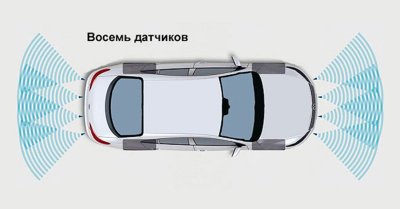 Mortise parking sensors are considered the most common today. For their installation on the bumpers, holes of the required diameter are drilled. Installing mortise parking sensors will not spoil the appearance of the body, as the device fits perfectly into the hole.
Mortise parking sensors are considered the most common today. For their installation on the bumpers, holes of the required diameter are drilled. Installing mortise parking sensors will not spoil the appearance of the body, as the device fits perfectly into the hole.
Next in popularity are suspended parking sensors. They are mounted on a bracket at the bottom of the rear bumper.
The third in demand in Russia can be considered overhead parking sensors. They are simply glued to the right places with a special adhesive composition. Usually this method is used when installing two emitter sensors.
Four ways to signal the driver
Depending on the cost and model, each parking sensor can send an alert in different ways:
- Sound signal. Not all devices are equipped with displays, and therefore, when an obstructing object is found, the parking sensors will begin to give signals to the driver. As the distance to the object decreases, the signals gain sharpness and frequency.
- Giving a voice signal. The principle of operation is the same as that of parking sensors without a display with sound alerts. Usually, voice signals are installed on Chinese or American cars, which is not very convenient for the Russian user, since the warnings are carried out in a foreign language.
- Giving a visual signal. It is used on the most budgetary types of parking devices with two emitters. In them, the indication of the reduction in the distance to the object is given through the LED, which highlights the green, yellow and red danger zone as it approaches the obstacle.
- combined signal. One of the most modern ways to alert the driver is to use several or all signaling methods at once.
Indicators or displays are usually installed in the most convenient places for the driver in the cabin - on the rear-view mirror or rear window in the car, on the ceiling, on the rear shelf.
Recommendations of FAVORITMOTORS Group specialists on the use of parking sensors
Before buying parking sensors, carefully read the manufacturer's instructions about the installation and use of a particular system. And make sure that the devices do not get dirty or covered with ice, otherwise they will not work correctly.
Even the most expensive and innovative parking sensors do not guarantee 100% vehicle safety when maneuvering in parking lots. Therefore, the driver must visually control the maneuvers.
And, as each of our clients who have installed an acoustic parking system in FAVORIT MOTORS Group of Companies notes, the comfort of driving in reverse immediately compensates for the funds for the purchase of the device and its installation. And therefore it is more expedient, more profitable and safer to choose a device after consulting with professionals. The company's specialists will competently and promptly install parking sensors of any complexity, and, if necessary, carry out any corrective work and repair of the system.
Therefore, it is advisable to install parking sensors, choosing the optimal device after consulting with professionals. The company's specialists will competently and promptly install parking sensors of any complexity, and, if necessary, carry out any corrective work and repair of the system.
